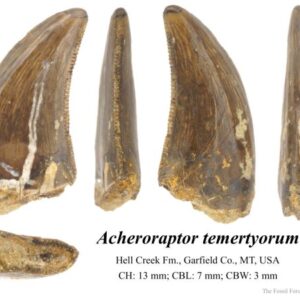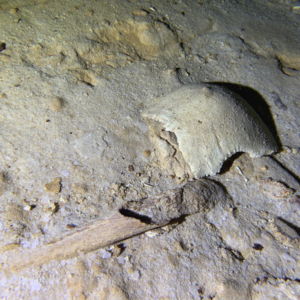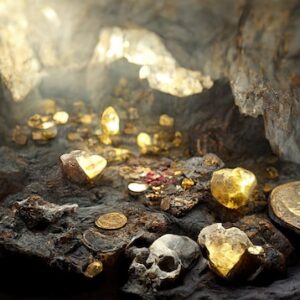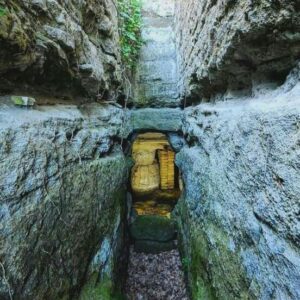Around 262 million years ago, during the middle Permian Period, a new family of reptiles emerged. Pareiasaurs—meaning “cheek lizards,” a reference to the flat flanges of bone that make up their cheeks—had skulls covered in bony growths and bumps, and bony plates on their bodies.

They were among the first large terrestrial animals to evolve and did so rapidly, quickly becoming some of the most abundant plant-eating animals worldwide. At least 21 separate species evolved before all pareiasaurs were wiped out about 252 million years ago during the Permian-Triassic extinction event.
From the 1830s onward, pareiasaur fossils began to be found in various parts of the world. One large, abundant species, Bradysaurus, from the middle Permian Period, was found in South Africa and scientifically described in 1892. Scutosaurus, from the late Permian Period of Russia, was described in 1922.

Thanks to more than 150 years of research, we know that several pareiasaurs were big animals, reaching lengths of up to 3 meters. Their bones reveal that they were thick and stocky. They stood low to the ground, with a primitive sprawling posture. But no accurate studies of their likely body mass exist.
Body mass plays a central role in understanding an organism’s general physiology, ecology, metabolism, diet and movement.

In our new study published in Historical Biology, we set out to fill this knowledge gap for Bradysaurus, having done so for Scutosaurus in another piece of work. We used a new method for calculating body mass that allowed us to calculate the Bradysaurus had a likely overall average body mass of 1,022kg.
For the Russian Scutosaurus, we found an average body mass of 1,160kg. That means both of these pareiasaurs, from different hemispheres and living in different times, weighed in at about the mass of a large adult black rhino or a large domestic bull.

Bradysaurus is the oldest pareiasaur that has been reliably dated. It was one of the earliest huge plant-eating tetrapods (four-legged creatures) to appear in the development of life on Earth, along with other large pareiasaur species like Scutosaurus. By obtaining accurate body mass estimates for these animals, we can better understand the evolution of the said body mass, which was built around a long intestinal track inside a huge fermentation chamber—just what the animals needed to break down high volumes of poor quality vegetation.
Body size in herbivores

Now that we have what we believe is an accurate estimate of two pareiasaur species’ body mass, what does it tell us?
The fossil record suggests a rapid increase in body size between the time when their (likely small) ancestors diverged from other early reptiles and the first appearance of Bradysaurus in the fossil record about 262 million years ago.
Bradysaurus’s large size is best explained by a negative relationship between food digestibility and body mass. In ecology, this is known as the Jarman-Bell principle. It predicts the evolution of large body size in herbivores that ingest copious, low-quality plant material. Plants are hard to digest, and a plant-based diet typically results in a large body size—herbivores are typically substantially heavier than other dietary groups in living animals.

Alternatively, or maybe in conjunction with the evolution of herbivory, the large body size of Bradysaurus may also have evolved as protection from co-existing predators. Pareiasaurian body armor and their large cheek flanges also suggest adaptations developed as protection from common predators, which would be especially useful for these slow moving, stocky herbivores.





